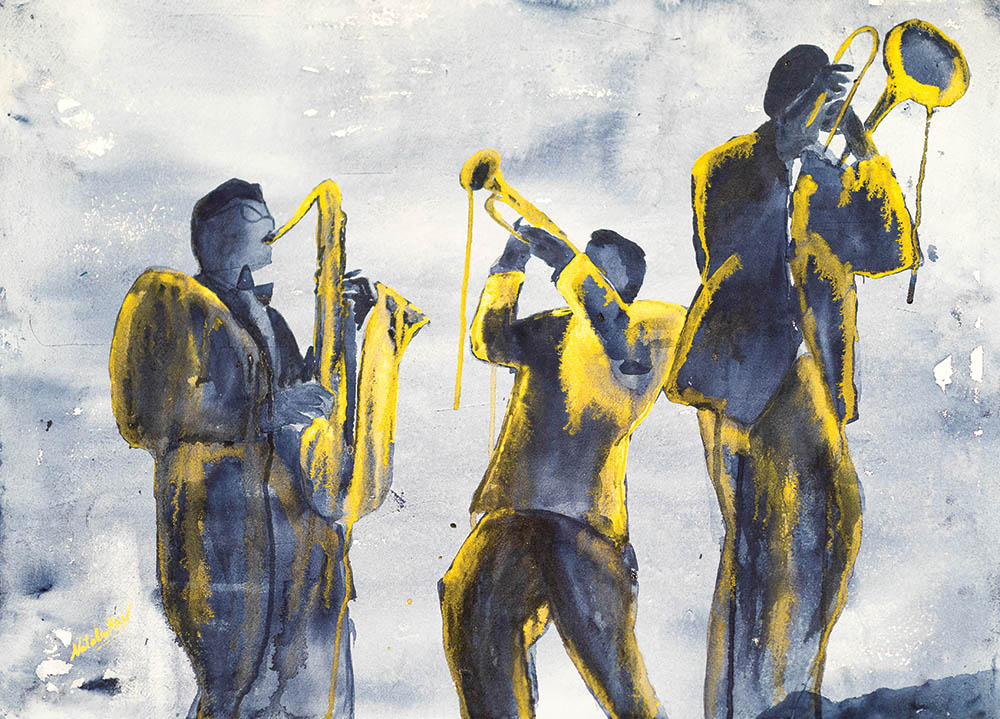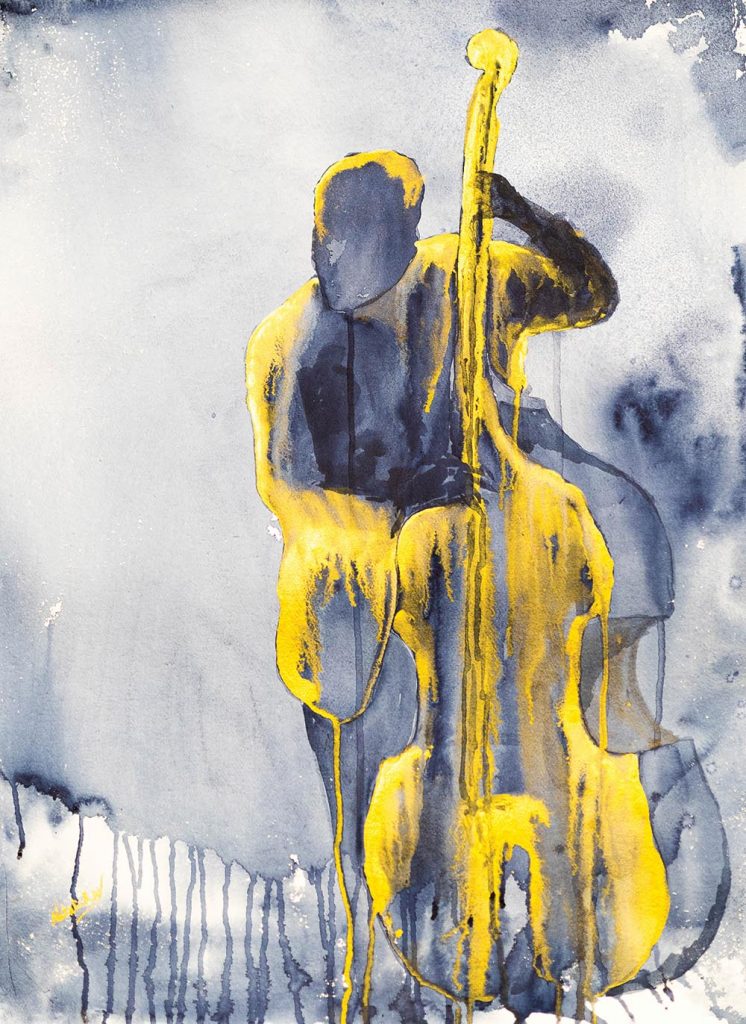
If you look at a trumpet, you’ll notice it only has three valves. For those who don’t play the trumpet, that can be a bit confusing, since you hear the trumpet player blaring out a broad range of notes. But unlike with a guitar or piano, the range of the trumpet doesn’t come from the movement of a player’s fingers, but through the mouth. It’s the softness or aggressiveness of the breath bellowed through the twists of the horn that cause it to rise or fall through a wide, harmonic series of octaves.
There’s something similar that happens when Natalie Ray wets the tip of her brush and touches it to paper to fill in the hazy silhouette of her husband playing his trumpet. It isn’t just the primary palette she’s blended together that will color the painting, but a gentle application of water that allows her paints to shift through a wide range of shades and emotions — all from three basic colors.

“You can make any color just from your primary colors,” she notes. “I just always loved the way that watercolor looks. It’s so fickle, and I like how it paints itself a little bit.”
Ray didn’t always paint musicians. When she came to Asheville from San Francisco, she painted flowers, and before that, when she was studying at the University of Barcelona, it was landscapes and European street scenes, the kind of subjects most of us are used to seeing in watercolor. But after years of painting and studying, she found her voice while watching her husband, trumpeter Justin Ray, on stage. (Justin plays for star jazz vocalist Michael Bublé and directs his own jazz orchestra.)

“Visiting my husband and going to shows all over the world, what I consistently find with jazz musicians is that because there’s so much improvisation in their music, you can just really see that passion literally flowing through their body and their muscles,” she says. “Watercolor is the perfect avenue for that because it kind of improvs itself a lot.”
Ray’s work, like the music that inspires it, is a constant push and pull between rigid structure and boundless spontaneity. When she paints her figures, she actually brushes them out in water first before adding the paint, in effect confining the paint to a certain region and telling it where to go, but allowing it to flow wherever it will within the boundaries of the silhouette. “Watercolor will only paint where it’s wet,” she explains. The result is a ghostly translucent silhouette of musician and instrument — an image whose shadows waver in their own contrast. It’s moody, a dark dream.

Her works evoke the street art of New Orleans, but where those paintings have an audacious, drunken feel, hers are distinctly more somnolent — a musician seen through the haze of a smoky bar, the vague memory of an old melody floating somewhere in the wash of stormy paints on khadi paper.
It’s tough to find anything to compare them to. And that’s probably because this isn’t a process or style the artist was taught, but a technique she developed herself.
“I’m proud of my work,” says Ray, “because I feel like it’s the first creative thing that I’ve done that doesn’t have an influence from anyone else. I didn’t take inspiration from another artist, I didn’t copy anyone, it’s just totally my own.”
Natalie Ray, Asheville. Ray’s work is affiliated with 310 Art (191 Lyman St. #310 in the River Arts District, 310art.com). For more information, see natalieonpaper.com or @natalieonpaper on Instagram.